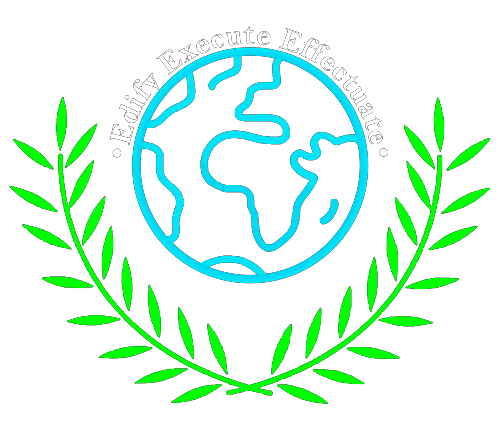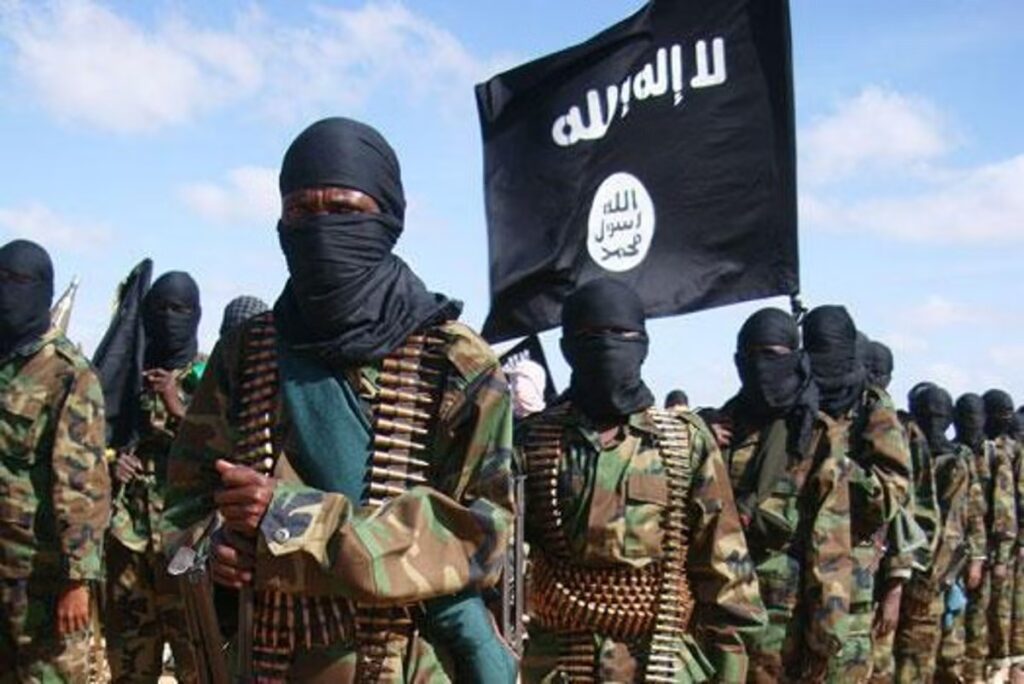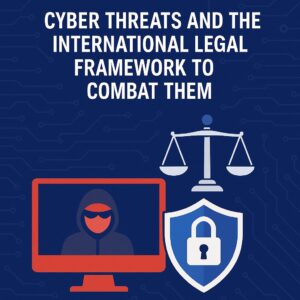By Swastika Sahoo, Samriddhi Shet, Tarisha Delisha P Varghese.
 Introduction
Introduction
Terrorism, the most inhuman form of political violence, has been a threat that no nook or corner of the world is devoid of. Between 1970 and 2020, the Sub-Saharan African countries have faced 736 terrorist attacks by Boko Haram and Al Shabaab, mainly due to the incompetence of the government and economic decline. The growing terrorism in Sub-Saharan Africa serves as the greatest risk against ensuring peace and security in the area. The West has also been involved in the fight against terrorism within the region by dispensing funds to the countries to purchase military equipment and development projects; however, these efforts seemingly prioritize geopolitical interests rather than addressing core issues. It could be argued that militarized strategies only increase violence and do not resolve the root causes that generate the violence. The aim of this research is to ascertain whether applicable international counter-terrorism policies can be utilized in Sub-Saharan Africa. At the center of these policies, the research hints at a deep review of the development to ensure the achievement of durable peace.
Background
The increase of terrorism and conflict in Sub-Saharan Africa over the decades is alarming, and it has led to the destabilization of security and development in the region. According to my research, between the years of 1970 and 2020, there were more than 700 terrorist attacks, and around 280 occurred during the previous decade alone. This paints a dark picture of sub-Saharan Africa, as according to Hata et al. (2023) the region has accounted for 50 percent of the total deaths caused by terror activities in 2021 only.
Boko Haram, Al Shabaab, and cousins of ISIS or even Al Qaeda have rapidly grown terrorist groups that can attack your country at any given time. These terrorists take advantage of places that have weak governments or even weak economies in order to recruit people. Military engagement with such groups has cost billions, which has led to a cycle of poverty and violence, and because the military intervention measures are so expensive, it has slowed down the economic growth. For example, West Africa suffered from 1800 attacks; the modern-day conflict has led to a loss of multiple human lives alongside humanitarian crises.
Even as the threat of terrorism continues to be a very real one, some of the measures taken in counter-terrorism have warranted some criticism, especially with respect to human rights violations. Broad definitions of terrorism in certain legislations have resulted in the violation of civil liberties such as cooperating and free speech (FIDH, 2007). Further, the military approach to counter-terrorism in certain instances has aggravated the situation as they have destabilized the already fragmented regions. Critics argue that without adverting to the problems of target audiences, such as terror victims socio-economic conditions, such as poverty, lack of jobs, and political alienation, these strategies will be futile or worse still counterproductive (Duffy, 2023).
The increase in terrorism in sub-Saharan Africa is complex and demands a more penetrative perspective. There should be a combination of strategies that meets the international concern of counterterrorism whilst respecting human rights. On the extreme, too much force can alienate the residents, encouraging the young to embrace extremism. On the other hand, if the security needs are ignored, then terrorist organizations will thrive with no restraint. An all-round approach that cuts across socio-economic elevation, accountability and responsibility, and civil society organizations is required. Talking about extremist groups root causes, like poverty, politics, and corruption, if addressed, can solve the problem.
However, when taking all of this into consideration, extensive research and studies have been done on terrorism in Sub-Saharan Africa, and the global community still faces a dilemma: the dilemma of how to develop effective long-term counterterrorism measures that involve tactics that protect human rights.
Implementing the UN Global Counter-Terrorism Strategy in Southern Africa: A Complex Landscape
The UN Global Counter-Terrorism Strategy, adopted in 2006, provides a framework for international cooperation against terrorism. Its implementation in Southern Africa presents a complex picture, with both progress and persistent challenges.
Many states have updated their legislation to criminalize terrorism and related activities, in line with UN recommendations. For example, South Africa enacted the Protection of Constitutional Democracy against Terrorist and Related Activities Act in 2004 (Institute for Security Studies, 2005).
Capacity Building: Regional organizations like the Southern African Development Community (SADC) have played a crucial role in enhancing the capacity of member states through training programs and joint exercises. The SADC Protocol on Combating Terrorism (2002) provides a regional framework for cooperation (SADC, 2002).
Southern African countries have actively participated in international counter-terrorism initiatives, including information sharing and joint operations.
Many countries in the region face resource constraints, hindering their ability to effectively implement all aspects of the strategy. This includes a lack of funding, technical expertise, and infrastructure. Underlying socio-economic issues, such as poverty, inequality, and unemployment, can create an environment conducive to radicalization and recruitment by terrorist groups. Addressing these root causes is crucial but often neglected. Some counter-terrorism measures have raised concerns about human rights violations, including arbitrary arrests, detention without trial, and restrictions on freedom of expression. Balancing security with human rights remains a critical challenge.
Proponents argue that the strategy has provided a valuable framework for regional cooperation and has led to tangible improvements in counter-terrorism capabilities. They point to the increased legal frameworks, capacity-building efforts, and international cooperation as evidence of progress. However, the strategy has been implemented unevenly and has failed to address the root causes of terrorism. A disproportionate focus on security measures has neglected socio-economic factors and human rights concerns; sometimes the strategy is too broad and lacks specific targets and indicators, making it difficult to measure its effectiveness.
Data and Statistics:
According to the Global Terrorism Database, Southern Africa has experienced a relatively low number of terrorist attacks compared to other regions. However, there has been a recent increase in terrorist activity in certain areas, particularly in Mozambique, where the emergence of the ISIS-linked group Ahlu Sunna Wal Jamaa has caused significant instability (Institute for Economics & Peace, 2022).
In conclusion, the implementation of the UN Global Counter-Terrorism Strategy in Southern Africa is an ongoing process with both successes and challenges. While progress has been made in strengthening legal frameworks, building capacity, and fostering international cooperation, significant gaps remain. Addressing socio-economic factors, upholding human rights, and ensuring adequate resources are crucial for the strategy’s effective implementation. A more nuanced approach is needed, one that recognizes the complex interplay of factors contributing to terrorism and prioritizes both security and human rights.
Western role
The western half of the globe has long been credited with addressing conflicts and counterterrorism in sub-Saharan Africa through technical, developmental, and military interventions. The significance of these interventions has been in debate since time immemorial, balancing their detrimental and beneficial outcomes.
The United States of America has a glaring contribution to dismantling and disrupting extremist groups such as Al-Shabaab in Somalia and Boko Haram in Nigeria. As a part of initiatives like AFRICOM, which included drone strikes, intelligence sharing, and military training, were delivered to help the cause. The African Union Mission in Somalia (AMISOM) has been backed up by AFRICOM through support in advanced training, logistical aid, and surveillance capabilities. Moreover, many more programs like that of the Trans-Sahara Counterterrorism Partnership and the East Africa Counterterrorism Initiative aided in capacity building in the region. The motive of these efforts was primarily to arm African states to independently combat threats with biometric systems, trained police, and, most importantly, enhance border security (Arieff, 2019).
These initiatives also make efforts to address the deep-rooted causes of instability in the region. The IGAD Capacity Building Programme Against Terrorism, which was funded by western donors, works on fostering interagency collaboration and legal systems required to prosecute terrorism-related crimes. Online radicalisation has also been minimised using hefty investment in advanced cyber surveillance tools. (Rosand, Millar, & Ipe, 2009).
A critical eye on this could draw attention to the fact that these measures prioritise military interventions and solutions over the deeper roots of the socio-political drivers of extremism. As per the Congressional Research Service’s report of 2019, measures like drone strikes alienate local populations and fail to foster sustainable peace. The more important light could be put on the ulterior motives of the western world to fulfil their geopolitical power intentions by putting a smoke screen of being the garbingers of peace and security in the western Saharan region. For instance, U.S. military bases in Djibouti and Niger serve not only as counterterrorism hubs but also as strategic outposts to counter the influence of China and Russia. (Murphy, 2023). This way it can be seen that only those countries that hold strategic importance for the West receive biased distribution of resources and aid while the area with pressing security needs like that of the Central African Republic is often overlooked. This imbalance suggests a prioritization of strategic interests over equitable assistance (Arieff, 2019; Murphy, 2023).
One cannot deny the fact that the western nations have been instrumental in strengthening the regional security frameworks in sub-Saharan Africa. However, there is a need for more balanced strategies that include disruptive military measures. To look at long-term peace installation, it is vital to look into investments in stabilizing the government, alleviation of poverty and the smoothening of interethnic clashes. This way the western nations can look at a greater perspective of maintaining sustainable relations with the African states along with contributing to terrorism and security needs.
Conclusion
All the aforementioned strategies, interventions, policies, and drives might be technical in the facade but are actually a cry for the innumerable lives lost and losses incurred in this human-made catastrophe called terrorism. The world has already been scarred enough with the 26/11 attack, the Kenya school shooting of 2015, and many more. Everyday innocent lives are claimed because of the wrath of terrorist groups that neither UN interventions nor the western reinforcement have tackled yet. Hence, it is time we put an end to political radicalisation and violence by enforcing a multilateral collaboration on peace and security where humanitarian delivery of peace and security takes precedence over the power play of the aid providers
Reference
-
Arieff, A. (2019). U.S. counterterrorism priorities and challenges in Africa. Congressional Research Service.
-
Murphy, D. C. (2023). Strategic competition for overseas basing in Sub-Saharan Africa. Foreign Policy at Brookings.
-
Rosand, E., Millar, A., & Ipe, J. (2009). Enhancing counterterrorism cooperation in Eastern Africa. African Security Review, 18(2), 1–14
-
Duffy, H. (2023). Global trends in counter-terrorism: Implications for human rights in Africa. Institute for Security Studies.
-
FIDH. (2007). Human rights violations in sub-Saharan African countries in the name of counter-terrorism: A high-risk situation. International Federation for Human Rights.
-
Hata, R., Hart, A., Hertelendy, A., Tin, D., Taubman, C., Cheng, L., & Ciottone, G. R. (2023). Terrorist attacks in sub-Saharan Africa from 1970 through 2020: Analysis and impact from a counter-terrorism medicine perspective. Prehospital and Disaster Medicine.
-
Institute for Security Studies. (2005). Terrorism in Southern Africa: Threat and Response.
-
SADC. (2002). Protocol on Combating Terrorism.
-
Institute for Economics & Peace. (2022). Global Terrorism Index 2022






